By SERGEY KADINSKY
Forgotten New York correspondent
Among the city streets that follow elevated subway lines today, none are completely in the shade. McDonald Avenue, New Utrecht Avenue, and Roosevelt Avenue all enjoy a few blocks in the open while having most of their routes hidden beneath the elevated tracks. Only Livonia Avenue in Brooklyn’s Brownsville and East New York neighborhoods is completely in the shade from beginning to end. Among the city’s elevated lines, the Livonia El is perhaps the least storied and least known on the account of its distance from Manhattan, and the historical stigma of the low-income areas along its route. Its stations are currently in the process of being renovated as neighborhoods along the way experience a boom in residential construction after decades of decline.
The line originally opened out to Pennsylvania Avenue on Christmas Eve 1920, and out to New Lots Avenue in October 1922.
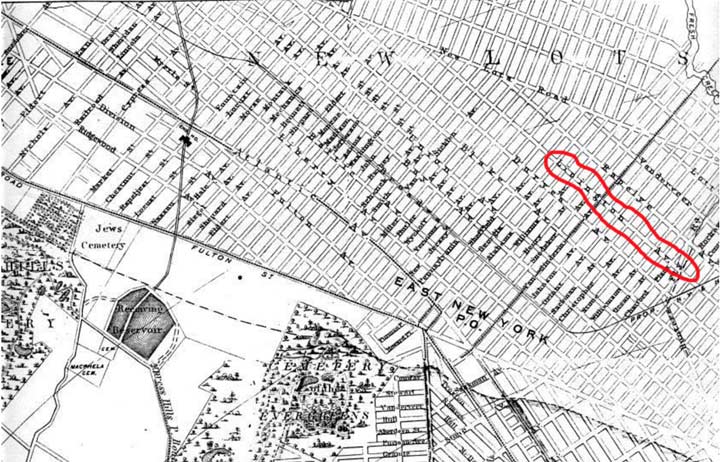
1874 map showing Linnington Avenue
 According to Benardo and Weiss’ Brooklyn By Name, When Livonia Avenue was first laid out in the town of New Lots in the late 19th Century it was named for the Linningtons, a local farming family (along with the Rapeljes and Van Sicklens, they divided up most of what later became East New York). The name was later changed to honor a Finnish-Polish-Russian province (see below, Livonia Park) on the shores of the Baltic Sea:
According to Benardo and Weiss’ Brooklyn By Name, When Livonia Avenue was first laid out in the town of New Lots in the late 19th Century it was named for the Linningtons, a local farming family (along with the Rapeljes and Van Sicklens, they divided up most of what later became East New York). The name was later changed to honor a Finnish-Polish-Russian province (see below, Livonia Park) on the shores of the Baltic Sea:
During the Livonian Crusade (1193–1290) the Livonian Brothers of the Sword, known as the Livonian Order from 1237, colonized ancient Livonia. The name Livonia came to designate a much broader territory: Terra Mariana on the eastern coasts of the Baltic Sea, in the present-day northern part of Latvia and the southern part of Estonia. It bordered on the Gulf of Riga and the Gulf of Finland in the north-west, Lake Peipus and Russia to the east, and Lithuania to the south.
Livonia was inhabited by various Baltic and Finnic peoples, ruled from the 12th century by an upper class of Baltic Germans. Over the course of time, some nobles were Polonized into the Polish–Lithuanian nobility (szlachta) or became part of the Swedish nobility during the period of Swedish Livonia (1629–1721) or Russified into the Russian nobility (дворянство, dvoryanstvo). wikipedia
Brooklyn has its examples of functionally named streets. Force Tube Avenue in Cypress Hills comes to mind. On the border of Crown Heights and Brownsville, the IRT subway diverges from Eastern Parkway, emerging alongside the functionally named Portal Street. The portal is within the sizable Lincoln Terrace Park, which lies on the slope of the glacial terminal moraine. The park was co-named in 1932 for Arthur S. Somers (1866-1932), a local philanthropist and civic activist. To the south of this park, the terrain is a gently sloping coastal plain descending to the seashore.
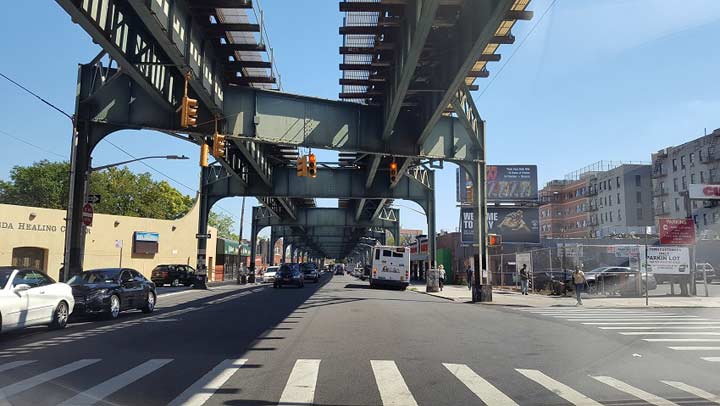
Under East 98th Street
Crossing East New York Avenue, the tracks follow East 98th Street in a southeast direction for a half mile. This road and nine others to its west are an extension of the Canarsie street grid that pierces into the larger Brooklyn grid. As a borderline between the two grids, East 98th Street is where many of Brooklyn’s east-west streets end, such as Church Avenue, Sutter Avenue, and Livonia Avenue. The great Kings highway also has its eastern end at East 98th Street. Sutter Avenue-Rutland Road is the only station on the Livonia El that is not on Livonia Avenue, serving commuters living in this nine-block grid.
Jewish Streets
In the first half of the 20th century, Brownsville and East New York were overwhelmingly Jewish, populated by refugees fleeing persecution and poverty in Eastern Europe. A pattern emerged where Jewish immigrants first lived on the Lower East Side and then moved either uptown to Harlem and the Grand Concourse, or east to what was then the edge of the city in Brownsville. Very quickly the neighborhood became as dense as the Lower East Side, with pushcart vendors, mobsters (Midnight Rose, an all-night candy store on Livonia, became headquarters for Murder, Inc.), Hebrew schools, and synagogues in the mix. In 1913, residents of Brownsville petitioned to have Ames Street renamed after Theodor Herzl a decade after his death. The Austrian-born journalist founded the Zionist Congress in 1897, which led the effort towards the creation of modern Israel.
A block away, Douglass Street became Strauss Street, in honor of the philanthropic brothers Nathan and Isidor Strauss, who owned the Macy’s department store. A former Congressman, Isidor went down in history aboard the Titanic, where his wife Ida gave up her lifeboat seat to a younger passenger. Not far from them is Zion Square on Pitkin Avenue and Legion Street (2nd photo), where the monument features a Star of David.
No Jews reside on Herzl Street today but many local churches still retain architectural elements that remind us of their past use as synagogues.
I thought that this was the only Herzl Street outside of Israel. Actually, there’s another one in Memphis and a recently built Herzl Street in in the Toronto suburb of Kleinburg.
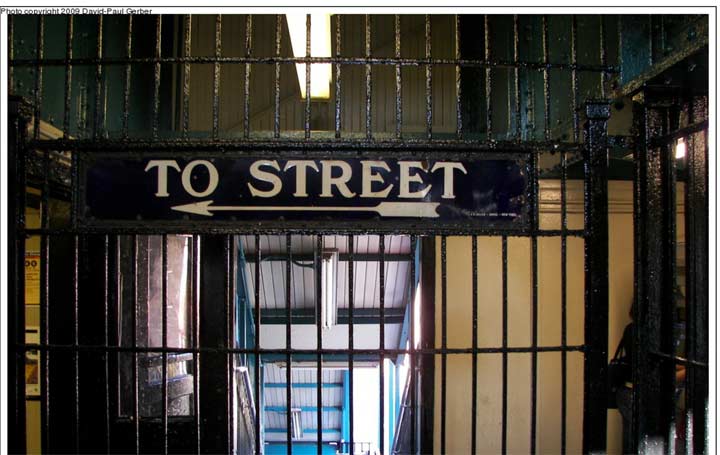
Up above in the Saratoga Avenue el station, we find an original 1920 exit sign. Look at the craftsmanship, the serif lettering, the rendering of the arrow on this beautiful navy blue and white sign. (Not sure it’s still there, as this comes from a 2009 photo on nycsubway.org.)
We can only hope that when the Metropolitan Transit Authority, which has now been alerted to the presence of this nonstandard sign, removes it, it could be donated to the Transit Museum instead of it taking its place in a landfill or on a private collector’s wall.
Betsy Head Park
This two block park, on the north side of Livonia between Strauss and Thomas S. Boyland Streets, has been a curiosity on the account of its name. According to the Parks website, Betsy Head was a British-born philanthropist who bequeathed funds of the establishment of this park in 1914. The pool was originally built in 1915 and expanded as a public works project in 1936, incorporating elements of the Art Moderne style in its design. This includes the parasol roof that today is closed to the public.
A block to the north of the pool is a smaller portion of Betsy Head Park where the playground received an ambitious redesign in early 2016. Billed as the Imagination Playground, it features an elevated walkway ringing the play area. It is reminiscent of the nearby elevated subway but actually inspired by treehouses.
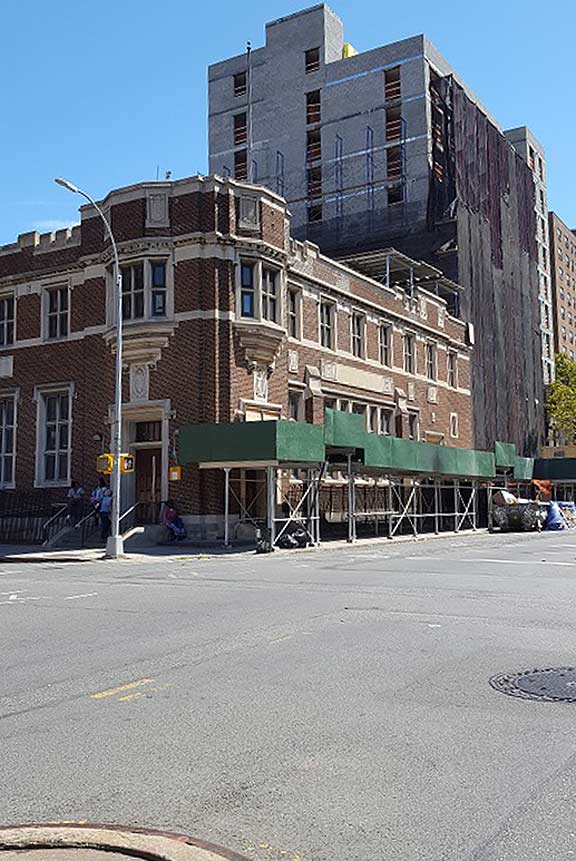
Hopkinson to Boyland, Stone to Gaston
The street running past the pool is Thomas S. Boyland Street, or Hopkinson Avenue as it was known to older Brownsville residents. Born in Memphis, he was elected as the State Assemblyman for the neighborhood in 1977. A former math teacher whose previous career included time spent teaching in Zambia, Boyland lived in a time of civil rights activism and increased identity awareness among African-Americans. His three sons were named Djanja, Shaka, and Jumaane. Boyland died at the young age of 39 in 1983 and was succeeded by his brother William F. Boyland, who in turn was succeeded by William Boyland Jr. The third office-holding Boyland tarnished the family name in 2014, convicted of bribery and removed from office. The neighborhood dynasty was described in a 2005 New York Times article as the “Kennedys of Brownsville.”
Prior to carrying Boyland’s name, this road was called Hopkinson Avenue, which honored Francis Hopkinson (1737-1791), a signer of the Declaration of Independence from New Jersey. Scholars say he played a substantial role designing the American flag and national seal. He also wrote essays, played the harpsichord and the organ. He was among the 41 slaveholding signers out the 58 in total.
As Strauss and Herzl memorialize Brownsville’s past as a Jewish neighborhood, local black history is on the map with Boyland and nearby Mother Gaston Boulevard. The reason for Stone Avenue’s renaming can be found at the Gothic revival library on the corner of Mother Gaston Boulevard and Dumont Avenue (shown above). It was here that local resident Rosetta Gaston (1895-1981) founded the Brownsville Heritage House, promoting history and culture. Shortly after her death, the avenue passing by the library was assigned her name.
Related: Still Stone-d in Bedford-Stuyvesant
Housing Projects
To the east of Rockaway Avenue, the elevated line runs past a series of public housing projects: Brownsville, Van Dyke and Tilden. When the Brownsville houses were built, they stood in a racially and economically mixed neighborhood. Within a decade, redlining, public disinvestment, white flight and crime had completely changed the neighborhood. In those years, more projects were built, completing the transformation of Brownsville into the lowest-income section of Brooklyn. One can imagine taking a graffiti-covered 3 train in the 1980s past these projects. Rivaling the South Bronx, this is the New York that tourists feared.
My first encounter with these projects was in November 2008, when I reported on the murder of Imonil Aminov, a Bukharian Jew who was delivering meals to homebound seniors living in these projects. “No snitching” was the rule on these streets and to this day Aminov’s murder is unsolved. I attended his funeral and mourned with his family.
I presume that these projects are safer today than in 2008, but nevertheless the place sends chills when I pass them by. A murderer lives here.
Livonia Park
At Powell Street is a sitting area, Livonia Park, where I sat to take a break on this photo essay. All along I wondered why there is an avenue in Brooklyn named after a historical Baltic province. For those unfamiliar with its history, Livonia was located in what are now Latvia and Estonia, named after its indigenous residents, the Liv people. It was never an independent state, ruled by the Teutonic Knights, Sweden, and the Russian Empire. For eight brief years Livonia was a nominally impendent puppet state of Ivan the Terrible’s Russia. But when its Danish-born King Magnus lost the tsar’s favor in 1578, so did the kingdom’s brief moment as a sovereign state.
Over the centuries the Liv were subject to persecution and gradually assimilated into the larger Latvian people. Like the Celts of the British Isles, unassimilated Livs were pushed to the edge of the sea. Today, the last redoubt of Livonian culture and language is at Cape Kolka, a spit of land where the Gulf of Riga and Baltic Sea meet.
Livonia Park was developed together with Tilden Houses in the 1960s. To give the park’s name meaning, it is decorated with red and white paving bricks evoking the Latvian flag.
While it is accurate as most of Livonia is within today’s Latvia, the Liv people have their own flag, a green-white-blue tricolor. If it were up to me, I would have the flags of Latvia, and Livonia displayed together at this park, alongside the standard Parks flagpole.
My connection to Livonia is that I was born in Riga, Latvia. I’ve always wondered why is there an avenue relating to my birthplace in this largely African-American neighborhood.
Junius Connection
Above Livonia Park is the Junius Street station, where the elevated structure rises higher to cross over the LIRR Bay Ridge branch and the Canarsie (L subway) line. Being only a block away from the L train’s Livonia Avenue station, it is odd that the two were never given a transfer connection. Certainly these stations don’t see as much foot traffic as other stations that cross each other, and the estimated number of transfers wouldn’t be that high, but in a neighborhood that has been historically underserved by public services, wouldn’t a free transfer improve commutes by adding an extra option? There is talk of enabling a walking free transfer similar to 63rd Street-Lexington Avenue, with the eventual construction of a transfer passageway.
Alongside the Canarsie Line, the LIRR Bay Ridge branch hasn’t seen passenger service since 1924. There is talk of transforming it into an outer-borough Triboro RX line, but here the MTA has not committed to it. Another plan proposes expanding its use as a freight line with a Cross Harbor Tunnel from Brooklyn to Bayonne. For now, this line is quiet for most of the time.
[ed.: the connection is now likely to be made due to the upcoming L line shutdown for Sandy-related track repair beginning in 2019]

Livonia Commons
Seeking to balance the demand for residential construction while keeping it affordable, the city approved in 2012 a set of buildings along Livonia Avenue between Van Sinderen Avenue and Pennsylvania Avenue that includes a senior center, community center, school and garden. The architecture of Livonia Commons is postmodern, incorporating bright colors into the design as opposed to the uninspiring brick boxes of the nearby housing projects.
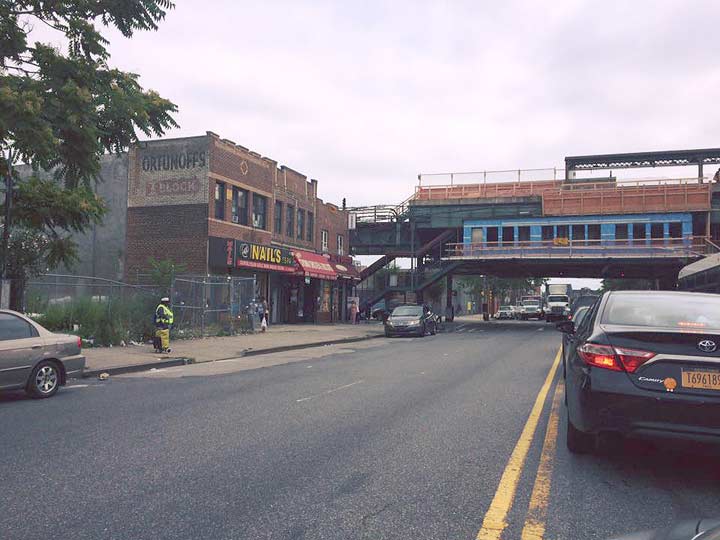
Fortunoff’s in East New York
On Pennsylvania Avenue just north of Livonia is a fading painted ad mural promoting Fortunoff’s department store in East New York. It sounds absurd, perhaps, to see such an upscale brand in this ‘hood. Its story began in 1922 when Max and Clara Fortunoff opened a household goods store on Livonia Avenue under the tracks. As the company grew, it expanded to selling jewelry and other fine items.
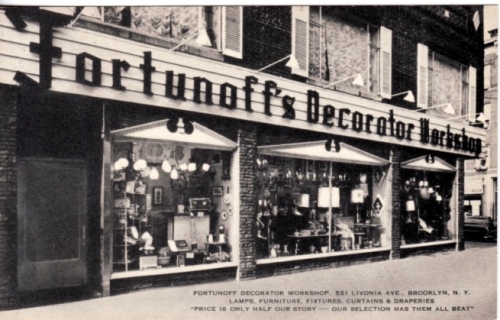
In 1964, the Fortunoffs followed their customers to the suburbs, closing their East New York store and reopening it in Westbury. Its grand department store survived until 2009. The company reorganized to sell many of its items online and later opening separate outdoor furniture and jewelry stores under the family name.

Wyckoff Triangle
Digressing a bit away from Livonia Avenue, there is a small triangular park at New Lots Avenue, Riverdale Avenue and Van Siclen Avenue. Titled Wyckoff Triangle, it honors the memory of Hendrick Wyckoff, a descendant of Dutch settlers whose property covered this triangle and the lbock to its immediate north. During the American Revolution, Wyckoff sneaked into British-occupied Brooklyn to collect information and funds for the patriots. His descendants maintained the property into the 1920s, when it was sold and subdivided by the street grid. This triangle is a remnant of Wyckoff’s estate, too small to be developed and designated as a public park.
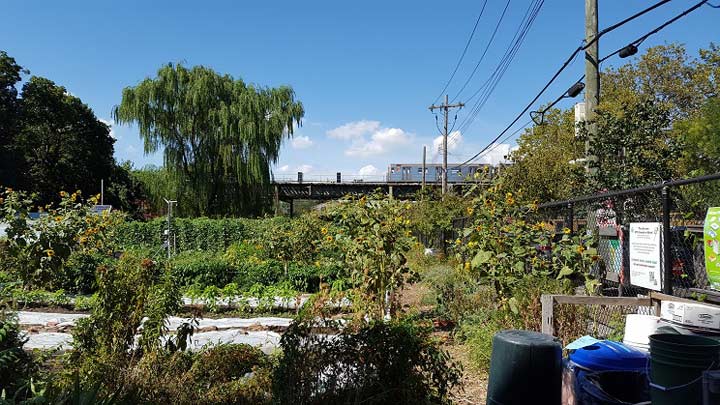
East New York Farms
One benefit of the urban decay that took place between the 1960s and 1980s is the opening up of vacant land throughout the inner city, with some of it transformed into parks and community gardens. East New York Farms is among the larger gardens, maintaining its own farmers market in view of the elevated tracks.
More in FNY: East New York Community Gardens
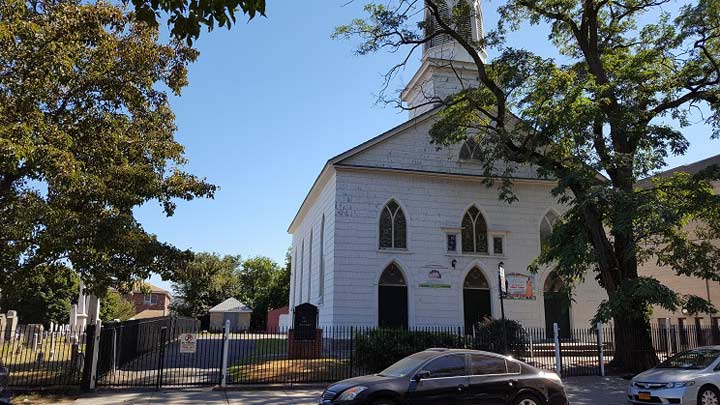
New Lots Reformed Church
In the colonial period, each of the borough’s original towns had its own parish of the Dutch Reformed Church. The one in Flatbush relates to Church Avenue, which runs past it. In 1821, the farmers of New Lots felt that the ride to Flatbush was too far and established their own local Reformed Church next to the town’s cemetery. The craftsmanship and federal style of this church earned it a city landmarks designation in 1966.

Its cemetery includes the graves of American revolutionaries and slaves, as well as namesakes of local streets such as Van Siclen, Schenck, Van Sinderen and Remsen, and the Rapaljes (who re remembered by Rapelye Street in Carroll Gardens).
African Burial Ground
Across the street from the historic church is the New Lots branch of the Brooklyn Public Library, a simple modernist facility completed in 1957. Before entering the library, I noticed street signs designating the block as African Burial Ground Square. I thought of the African Burial Ground in Manhattan and then remembered that prior to the revolution, New York had the largest population of slaves outside of the South and many worked on the farms in Kings County. In October 2013, the former cemetery site was designated as African Burial Ground Square with plans in the works to give Schenck Playground behind the library an African-themed redesign and a new name.
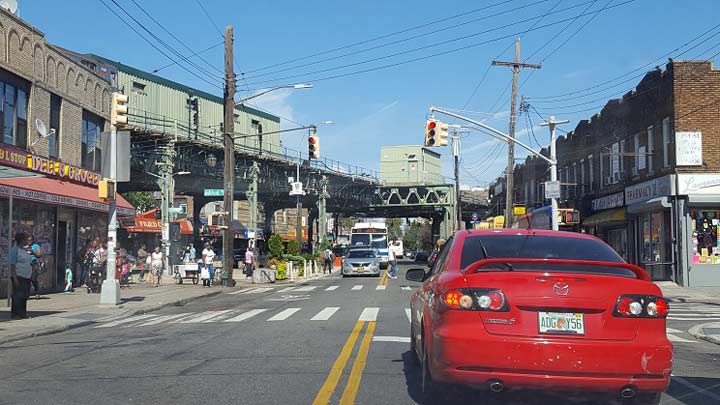
New Lots Avenue Station
In 1922, the IRT Lexington Avenue / Seventh Avenue lines reached their easternmost point in Brooklyn at this station. The terminal is unique in the IRT system as the only one without bumper blocks, with tracks continuing beyond into the yard with possibilities of extending train service further east.
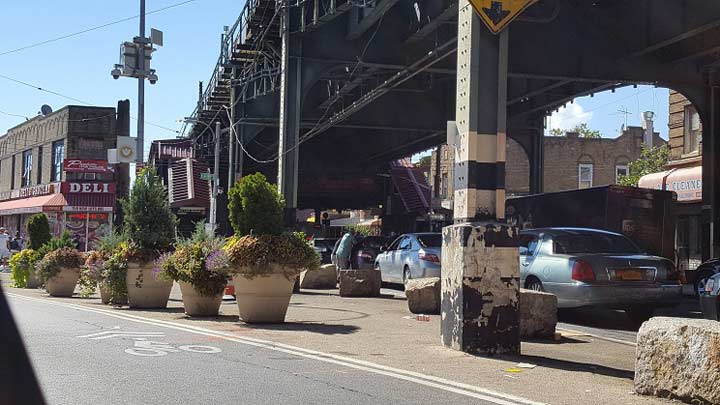
At this point, Livonia Avenue reaches its eastern tip, making a triangular intersection with the grid-defying New Lots Avenue. The city DOT extended this triangle into a pedestrian plaza, beautifying an otherwise mediocre conclusion to the 3 train.

Livonia Yard
A couple of blocks to the south of New Lots Avenue, the el widens into Livonia Yard, a storage complex for the 3 train. The yard straddles the pedal-to-the-metal Linden Boulevard, with its bumper blocks at Sutter Avenue. The blocks around this yard are industrial, mostly warehouses and small workshops. Occasionally, there is talk of extending revenue subway service into the yard with a new station at Linden Boulevard. There is precedent for this at the northern end of the 3 train. In 1968, the 148th Street-Lenox Terminal station was carved out of the Lenox Yard in Harlem, offering residents of that neighborhood an extra subway station and making the walk to the train shorter for many commuters.
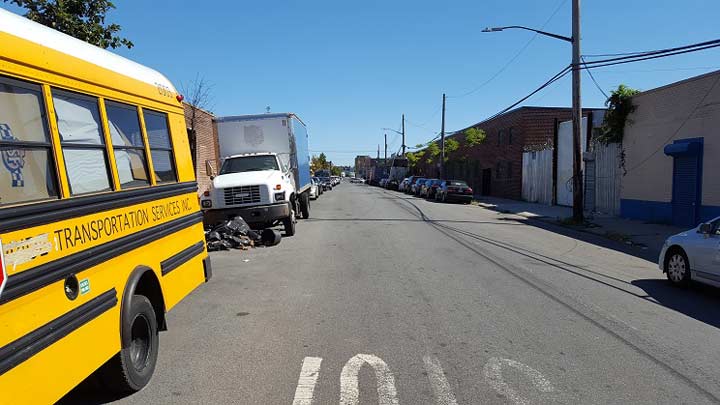
Beyond New Lots
Why terminate the line at Livonia Yard when the recently built Gateway Center mall and Gateway Estates development are only three blocks to the south? Back in 1968, nearly four decades before Gateway Center Mall was built, the city had plans to extend the line to Flatlands Avenue ahead of the area’s development. The city’s financial crisis in the following decade put a halt to the plan.
Those three blocks are mainly industrial so there would be no opposition here towards extending an elevated line here. An extension to Gateway will connect its residents to the subway, transit-riding public to its mall, and the soon to open park atop the former Fountain Avenue landfill that faces Jamaica Bay.
Sergey Kadinsky is the author of Hidden Waters of New York City: A History and Guide to 101 Forgotten Lakes, Ponds, Creeks, and Streams in the Five Boroughs (Countryman Press, 2016)
9/4/16

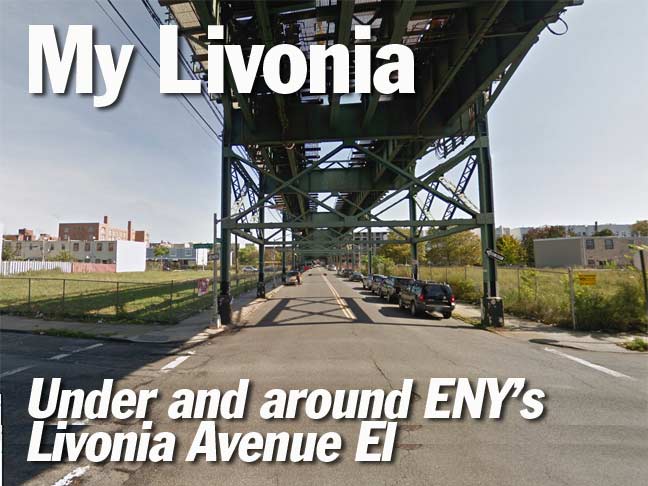
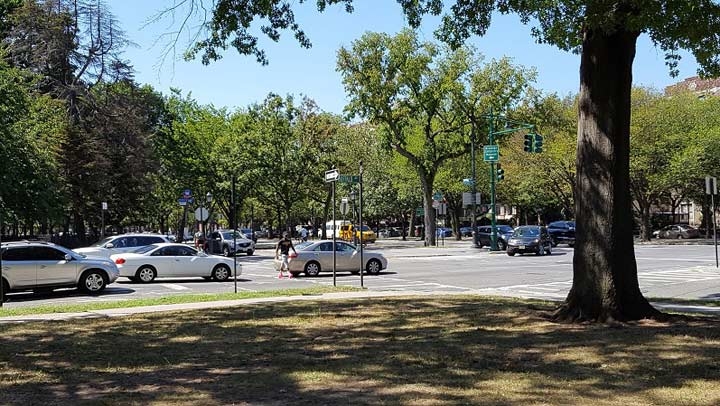


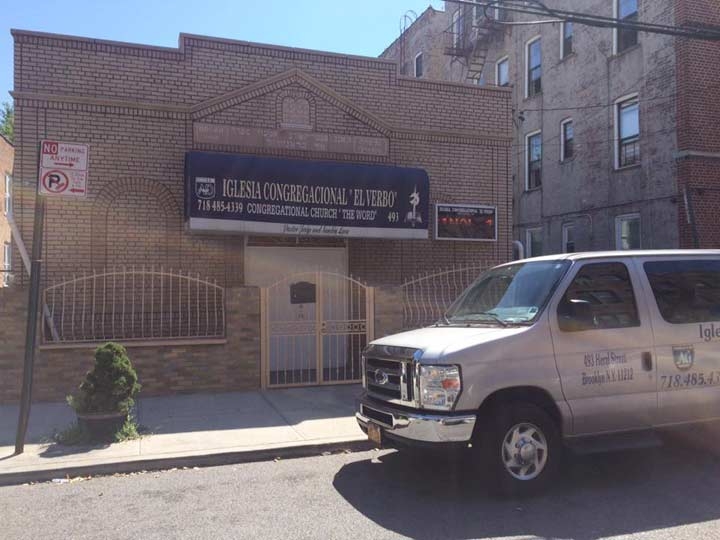
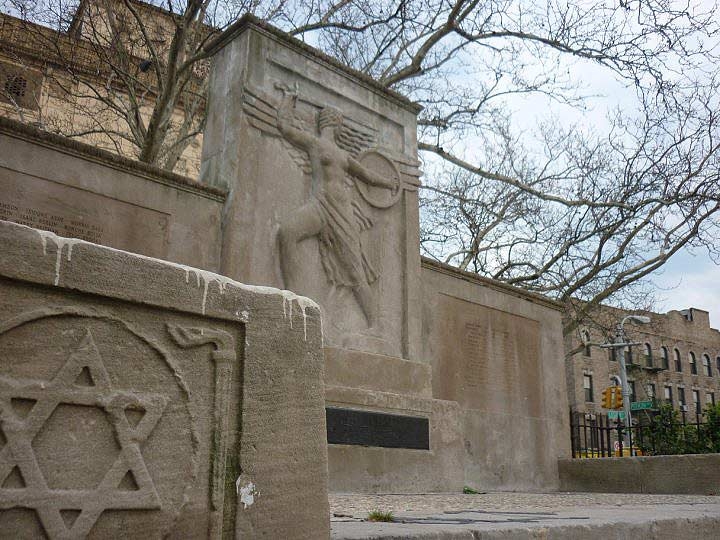
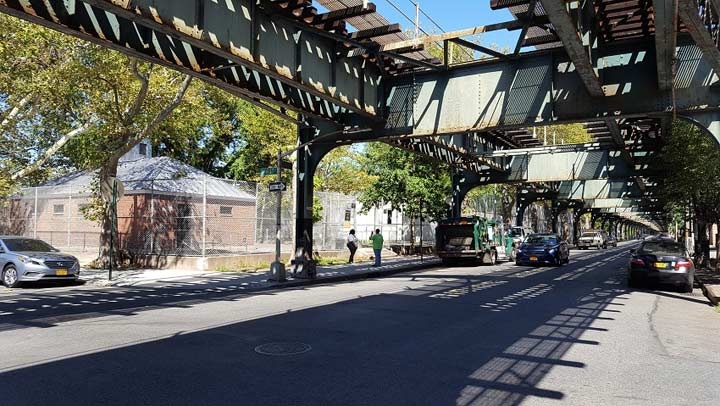
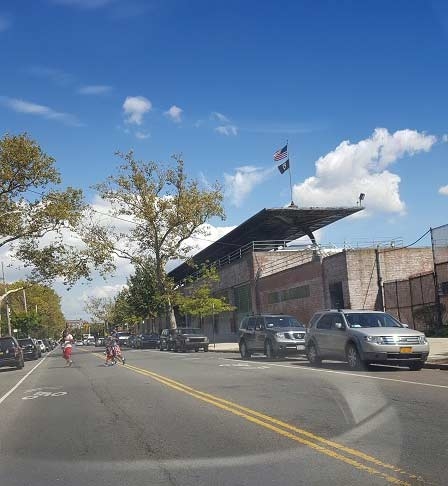

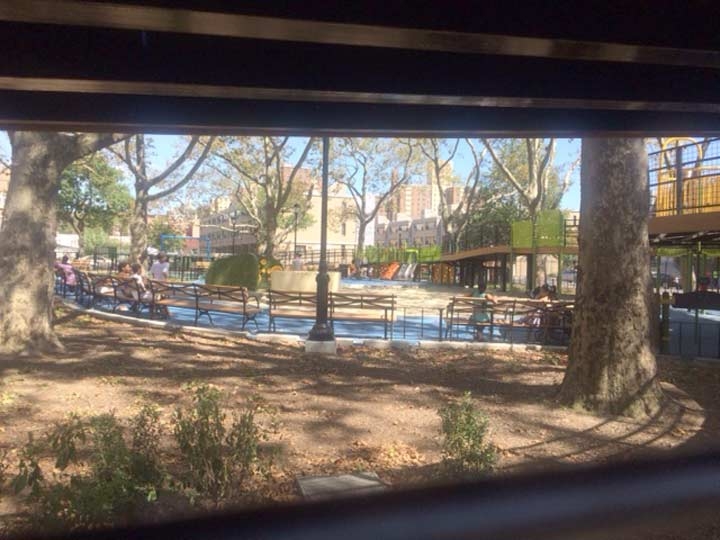
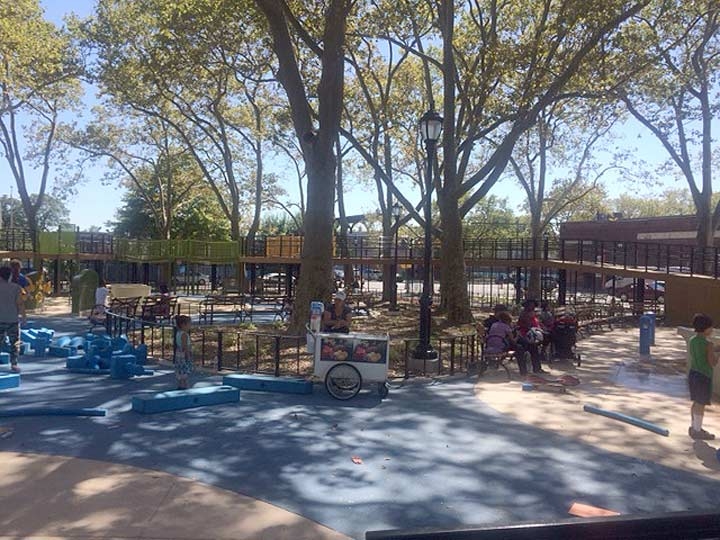
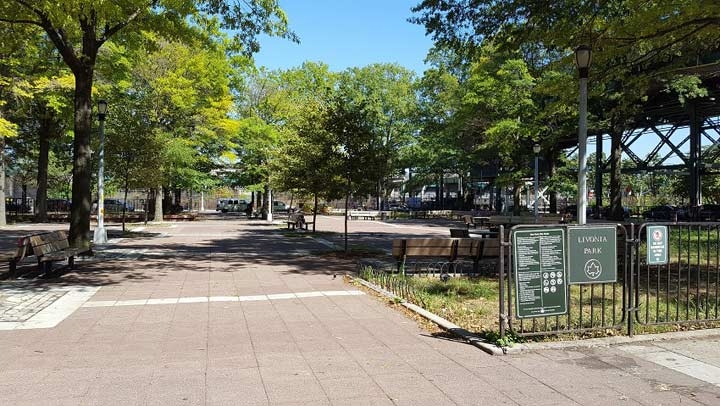
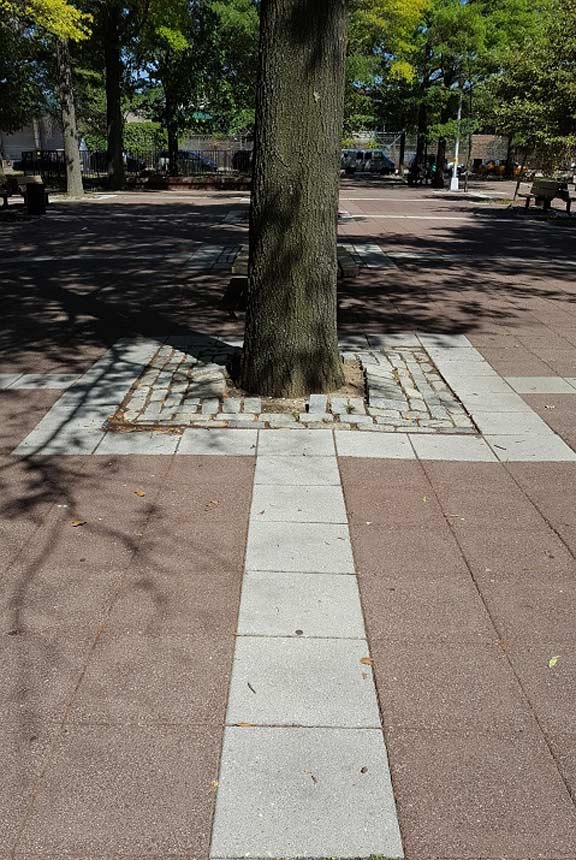

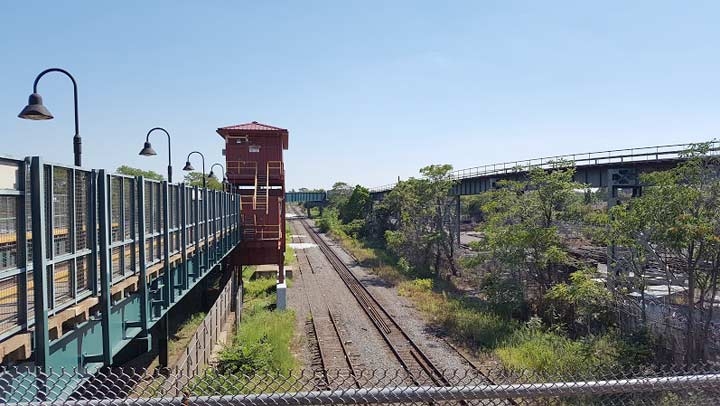
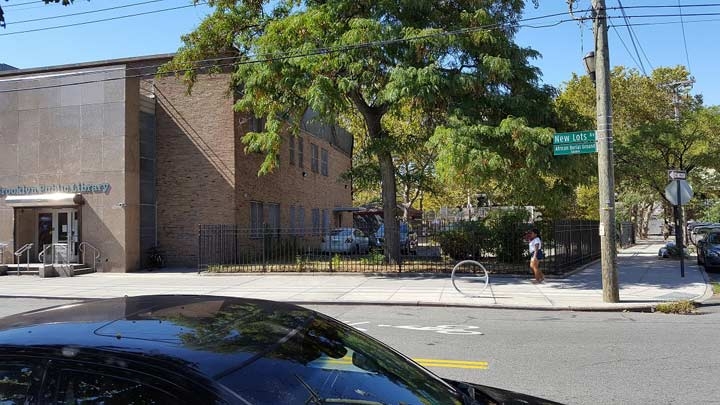
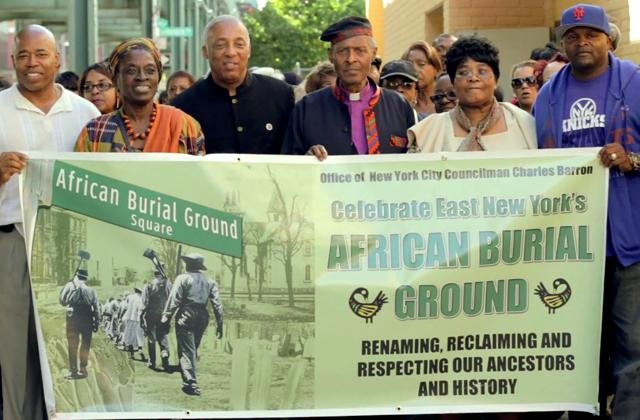
37 comments
Wonderful, thank you! Great memories. Brought me back to all the old neighborhoods that are part of my family history.
My Aunt and Uncle lived in a building that faced the Livonia Ave train. Loved watching the trains from my cousins bedroom. You felt like you could reach out and touch them. The shaking as the trains past the windows was exciting and terrifying at the same time
THANKS FOR THE MEMORIES.
I lived on christopher and newport st in the 1940s and 50s. this brought back many memories
i llived at 844 Stone Ave – between New Lots and Lott Ave. from 1944 till maybe 1951 or 52 when we moved around the corner to Christopher between New Lots and Lott. You must have
lived right across from Nanny Goat Park were I spent many a day. Did you live in that apartment building right on the corner? I had a friend who lived in that building. Her name was Arlene Newman. also remember that OLD candy store where on our way to school (PS 184) we would stop to buy sunflower and pumpkin seeds in the little cardboard boxes. I think they were 2 cents a box. And then on the corner of Newport and Stone a very modern luncheonette opened. The house on Christopher Ave (my grandparents purchased that house new in probably
1922 or 1923) no longer stands. My mother grew up in that house. I went to JHS 109 until it closed and then to George Gershwin.
Such fond memories.
I lived in brownsville in the 1940s and 50s. This brought back many memories
When did your family leave Brownsville?
Thank you for all of this. Sweet memories, lived at 588 Livonia Ave between Georgia and Sheffield! Looked up at the trains going by! Lived above a clothing store with a manaquein in the window with glass eyes that used to scare my brother and I to death but we had to get close to the store window everyday. Also a butcher store next to the clothing store. Fortunoffs just a block or two away. Drove past on a visit to Brooklyn and the building that only had two apartments was still there, that was in 2002 on our 50th wedding anniversary! We lived there in the late 30’s into the early 40’s. Loved every minute of life in Brooklyn. Thanks again!
Lived in Linden Houses (projects) 1957 till 1972ish.
Went to PS 190
George Gershwin JUS
Thomas Jefferson HS
Walked to the New Lots Library
Was in awe of the Dutch cemetery with the names of our streets.
Frequently walked to Fortunoff’s and the Biltmore.
Loved every minute of that neighborhood. The good the bad and the ugly.
Shaped me into the person I am today…strong, independent, tolerant and sentimental
Marty?
WOW! Great history. Young years (1934-1948) on Shepherd Ave. between New Lots an’ Dumont Aves. Went to St. Gabriel’s. Later (1964-1970) on Linwood St. across from that IRT “car barn”. Went to (“older” wooden lil’ church) St. Gabriel’s on New Lots Ave. (Torn down for new church/school complex). Was told Peter Styuvesant was also buried at that lil’ Dutch Church. Thank you for all of this! 08-21-2018
lived on Junius between Livonia and Riverdale where the New Lots and Canarsie lines intersected. There was a pedestrian bridge that crossed over the freight train yard which was our cobble stone playground. When we could we would walk to Nanny Goat park and later to the Brownsville Boys Club. NYC took over the BBC and it became the Brownsville Recreation Center. I have a lot of mostly good memories about the BRC.
Hello Howard Becker,
Just read your note about Brooklyn, I attended the Brownsville Boys Club Day Camp for several years. A friend and I, when we lived on Powell Street near Junius Street, frequented the movie theatre under the train Trestle on Livonia Ave.. Had some terrific times buying popcorn, a drink and “Good and Plenty”. We enjoyed walking to the
theatre and back. Life was so good back then. Great movies, main feature, News about the world and of course, those Cartoons. You were a rich girl when you had a
quarter for a whole day’s entertainment. I saved my pennies and nickels ” for a long time so as to not spend them frivolously. Attended P.S, 184 and also for a short time, P.S. 109.
You also mentioned Nanny Goat Park; my very first introduction to the “Monkey Bars” was at that park. My older brother took me to the park so that I would have a fun
time.; I can still remember the (concrete) water fountain. We lived just a few minutes away. I believe they also had a wading pool for the kids in the summer time.
Thanks for the reminiscence. Be well and wish you a good and healthy New year,
Marsha Kimmelman
I lived on Bradford Street between Livonia Avenue and Dumont Avenue, about half way “up the block” as we used to say in those days. The sounds of the subway were the background music of my daily existence. My stop was Van Siclen Avenue – there was no “k” in the spelling of the subway stop, nor on the street signs.
Great research. I grew up on the corner of Pennsylvania and Riverdale and worked at Fortunoff’s for a couple of years. We didn’t move until 1967 after most of the Jewish families had already made alliyah to the suburbs.
Fortunoffs first store was on E98 st & Newport. I was a little girl & Max would stand in the doorway & wave to me.
I lived on Van Sicklen ave between New Lots and Livonia the van Sicklen stop was on my corner
I lived at 579 Schenck Ave about 100 ft. from the el. Used to attend Boy Scout meetings at the church and then run through the cemetery checking out the names of the dearly departed. I got my first library card the day the new library opened.
I grew up in the Boulevard Houses, went to PS 273, Gershwin & Jefferson in the 50’s to 1964. We always heard that there was going to be a park on the landfill at the Belt Parkway & Pennsylvania but it never happened. Interesting to read that it is being built now.
What great memories. I lived at 52 Malta St. In 1941 we moved to 616 Pennsylvania Avenue. This was the best neighborhood in NYC. Moved to Miami in 1962. Married in 1960
Lived on hegeman & Miller from 1953 till 1968.loved growing up here.taught me everything about life & passed it on to my kids.still have friends from ps213 to Gershwin to Jefferson.walked to all my schools.great neighborhood growing up.
Graduated Jeff in 65. Walked down Livonia to the train. Old man sold delicious knishes from a pushcart. Ten cents. Worked for Dr. Charles Fine, dentist, at 196 New Lots Ave in 1964. One block from the train. For lunch, found a corner candystore and got a malted for 25 cents. Either walked home or took the train one stop to E. 105th St to the Breukelen Projects. My friend and brother worked at Fortunoff’s. Forgot to mention, my Mom, Estelle, lived on Pennsylvania Ave. 7 something. Her parents Benny and Celia Silverman owned a candystore called Silverman’s Sweet Shop. My Dad was from Blake Ave.
I remember regularly visiting my Grandmother with my Dad, Rocky Shustrin, in the mid to late Fifties, she lived in a two bedroom walk up ‘up the block’ from Livonia Ave. My Dad used to take me to a pizza place where slices were fifteen cents and to the oushcarts on Livonia where we used to get potato and kasha knishes for the same price. I was in heaven with the fresh, steamy knishes, topped with spicy brown mustard. My Dad used to buy things for my Mom like carpet cleaners from Fortunoffs. I remember being mesmerized by that store when I was young. Dad used to hold my hand when we walked among the hustle and bustle on Livonia’s sidewalks. Rocky graduated Thomas Jefferson in 1944 and traveled on the long train ride to CCNY Engineering School of Technology where he graduated with a degree in Electrical Engineering in 1948. Those were great times with my Dad, visiting the local park where he played basketball and to the Shul where he was Bar Mitzvahed. As you can see, my memories are very fond of my Dad, my best friend in life who passed away in 2006. His righteous life was formed on Livonia Ave and I’m happy and proud to see many of the similar posts here, speaking highly of your great neighborhood
I lived on Dumont ave in 1952 and my family went upscale to Hinsdale street; thereafter, to Woodhaven Queens!
Lived Schenck and Blake mid 40’s to late 50’s. Went to Jeff when it was fabulous, graduated in ’55. Spent summers with a spray attachment
to the johnny pump. Worked in the Kishke King in Brownsville when it was safe, even walked home at 11:00 PM without a worry.
Great memories, anyone remember the Miller Theater on Sutter Avenue. twelve cents admission, Cranes on Georgia Ave., great french fries,
the Chocolate Shop on Pitkin Avenue, and last but not least Wuhans Chinese near the Pitkin theater.
I lived at 475 Powell St. from 1949-1954. I don’t remember too much as we moved to Queens when I was 5, but I believe the Livonia Ave. el was at the corner of Powell St. My father and I used to walk across the Junius Ave. Bridge every weekend to visit my grandmother on Hinsdale St.
I lived in Alabama Ave and Livonia Ave back in 1966.Went to Peter Sinotte 218 on Fountain Ave.Used to look at the expensive items on the windows of Fortunoffs.Always bought the Joya CHOCOLATE covered jelly candy for 5 cents.I Love this article. Thank you so much for sharing. #BROOKLYNGIRL4EVER
This brought back great memories, We lived on Pennsylvania Avenue between New Lots and Hegaman. Grandparents aunts and uncles in surrounding area. Attended P.S 190 and George Gershwin. We moved to Canarsie in 67 and I attended Canarsie High School, missing all my ENY friends. Had a great childhood in ENY. Thanks so much. Living in Miami since 1979.
I was born in a woman’s hospital on new lots in 1966 . We lived on Herzl across the street half block away from betsi head park till I was about 6 lived in one of the big buildings they was torn down since . Small family houses were build to replace them .. I remember always visiting the park where my family would gather for baseball games .. I played little League baseball there also we left here when I was about six and moved to ozone Park queens but we always kept visiting the old neighborhood I still work you as an adult I work for Vandyke HousesIt was great seeing all the pictures and hearing the history of this please right now I’m sitting on Lavonia and Junius by the park reading this life is crazy
I spent the earliest part of my childhood at 811 Ashford St, a relatively short walk to the New Lots Ave Station. My dad was a dentist and his office remained there until the 1970s long after we had moved out from behind the office and our living room became the office’s waiting room and the old waiting room at the front of the house my dad’s office. I continued to visit the area till long after we moved to Flatbush, and eventually the suburbs, as often if we spent time in the city we would ride in with my dad and then take the subway either from New Lots or or one of the stops on the A train. My grandparents lived in the area as well on Milford St and grandfather worked for the TA often to save a bit of walking we would get on a train at the Lavonia Yard something today that I am sure would not be tolerated. I must have been in my early teens when they moved and he retired soon afterwards. I remember also one of my Dad’s Uncles had a mens clothing store surrounded by Fortunoffs. When he closed the business it became the music department of Fortuneoffs.
I lived on Vermont St, between Livonia & Riverdale
What was the name of the DELI, on Pennsylvania & Livonia. across from Metrics Luncheonette?
Lived on Georgia avenue betw. Sutter and Blake aves. 1959-1969 and Van Siclen Ave. Between Pitkin and Glenmore aves. 1969-1980. East New York was a great neighborhood to grow up in, even as it transitioned to mostly minorities. Never had problems with any of our Jewish, Italian or other Caucasian neighbors during those times… Love and respect and tolerance all around. Moved to Florida in 1980. Go back occasionally to visit siblings in Queens and NJ. Miss some aspects of Brooklyn…
Remember going to Bennys Luncheonette on New Lots Ave often. My dad was a Glazier. He and his brother has a glass shop at 2378 Pitkin between Ashford and Cleveland. I recall at a very young age seeing Trolley cars on Newlots Ave. Fortunoffs was not too far from there.
I WAS BORN IN BROWNSVILLE BROOKLYN NEW YORK THE HOOD NOVEMBER 18 1936 MY MOTHER EDITH TOOK ME AN MY BABY SISTER ROSYLIN TO BETSY HEAD PARK. WE LIVED AT 287 SNEDEKER AVE ONLY ONE STREET FROM THE CARNESY IT WAS GREAT TIMES PLAYED STICK BALL AND MARBLES IN THE STREETS LVGPSEYMORE
Lived on Belmont Ave betw Jerome and Barbey Sts.
Across the street from a Yeshiva. The houses are long
gone but the memories are still in tact. PS 158 was
a block away.
IM SEYMORE SAIDINER THE KOHEN BORN IN BROWNSVILLE BROOKLYN NEW YORK NOVEMBER 1936
287 SNEDEKER AVE. THERE WAS A LUMBER YARD
AN ON THE OTHER SIDE THERE WAS A DOCKING OF LARGE BOILERS AND AT THE CORNER SHEFFIELD
AN BLAKE AVENUE THE PUSH CARTS ON BOTH SIDES OF THE STREET FRESH VEGETABLES AND THE
CHICKEN STORE KOSHER MEAT MY MOTHER EDITH WOULD CLEAN THE CHICKEN FEATHERS. SO MANY MORE THINGS.
The only thing that remains the same are the street signs, the L and the fire hydrants……..otherwise, you could never ever go home again !
424 HINSDALE STREET. IN 1961, WE HAD TO SAY GOODBYE……………………… THERE WAS NOTHING SCARED ANY MORE.